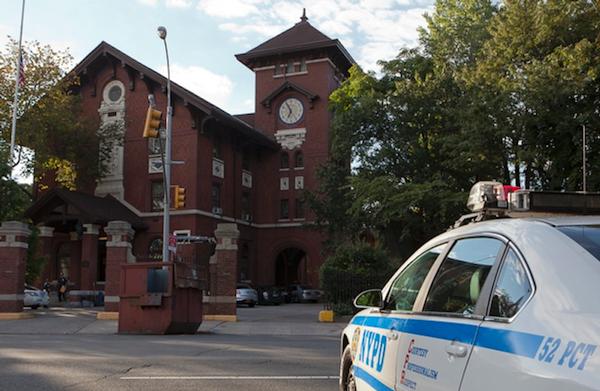
Photo by: Marc Fader
The 52nd Precinct in Norwood.
New Yorkers can easily learn how much crime goes on in the precincts where they live via weekly CompStat reports posted on the NYPD’s website. But Big Apple precincts are home to more residents than in many U.S. cities. So that data alone doesn’t help people figure out how safe or unsafe their blocks and neighborhoods are, or the type of crime they should be aware of.
Precincts keep close track of murder, rape, robbery, assault, burglary, larceny and auto theft in individual neighborhoods, or sectors. However, the NYPD rarely provides that sector-level data to anyone seeking it, even via Freedom of Information Law requests.
But that’s changing. As City Limits reported last September, Councilman Fernando Cabrera learned about the problem from the Norwood News, a Bronx community paper. It regularly sought 52nd Precinct data — often unsuccessfully — for years.
Held up in the Council since 2011, the legislation finally passed two months ago. It requires the city to make more crime information publicly available. In fact, the soon-to-be-available statistics will be significantly more local than even the neighborhood-size sector-stat data that the NYPD never willingly provided to the public.
The law requires the city to produce hyper-local data, essentially block-by-block (and also by address and zip code), on a monthly basis. But it may even be available much more frequently than that. Cabrera’s chief of staff, Gregory Faulkner, told that DoITT (the city’s Department of Information Technology and Telecommunications) expects to provide the data at close to “real-time speed. “
It’s a big change. This important information was even unavailable to elected officials like Cabrera, who told City Limits last September that the NYPD would not provide him and or his colleagues with sector stat data.
But relatively soon, even better data will be available to anyone looking for it on-line. It took almost two years to get a City Council vote out of committee, but that happened in April, and was widely supported. Mayor Bloomberg signed the bill into law on May 15. The data should be available by November to anyone who looks for it on the DoITT site.








